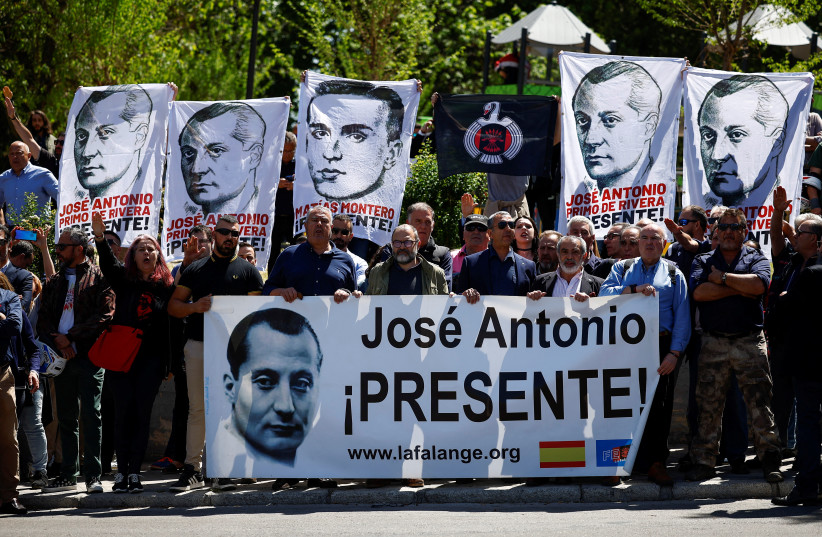Three people were arrested on Monday after police clashed with sympathizers of Jose Antonio Primo de Rivera, founder of Spain's fascist Falange movement that supported the Francoist regime, whose body was exhumed from a mausoleum near Madrid.
Spain on Monday dug up the body of Jose Antonio Primo de Rivera, founder of the fascist Falange movement that supported the Francoist regime, and removed it from a mausoleum carved into a mountainside near Madrid as sympathizers gave fascist salutes.
A handful of supporters gathered outside the gates of the complex formerly known as the Valley of the Fallen made the gesture and held up banners saying "Jose Antonio is present" or shouted "Long live Spain" as his hearse drove past.
Police struggled to hold back a larger crowd of about 150 Falange supporters gathered outside the San Isidro cemetery in southern Madrid, where he was to be reburied. They gave the fascist salute and sang the Falangist hymn "Facing the sun."
His exhumation, which follows the 2019 removal of the remains of dictator Francisco Franco, is part of a plan to convert the complex built by Franco, which last year was renamed the Valley of Cuelgamuros, into a memorial to the 500,000 people killed during Spain's 1936-39 civil war.
Presidency Minister Felix Bolanos on Friday hailed the exhumation as another step in giving the valley new symbolism.

"No person or ideology that evokes the dictatorship should be honored or extolled there," he said at the time.
The son of dictator Miguel Primo de Rivera, who governed Spain from 1923-1930, Jose Antonio was shot by firing squad in November 1936 by left-wing Republican forces in Alicante.
Exhuming the leader's body
It is the fifth time his body has been buried and the fourth time it has been exhumed.
In 1939, after having lain in two different mass graves in Alicante, his coffin was paraded 500 km (300 miles) from the eastern coastal city to San Lorenzo de El Escorial, a town near Madrid where Spain's royals are buried.
His remains were moved again on the completion of the Valley of the Fallen monument 20 years later and buried under the altar of the basilica, where Franco would join him on his death in 1975.
Franco, a conservative general, and Primo de Rivera, a flamboyant playboy, had little love for each other, according to Franco's biographer Paul Preston.
Franco sabotaged several efforts to organize a rescue or a prisoner swap that would have saved Primo de Rivera's life, Preston wrote in his biography.
His death allowed Franco to eliminate a rival and take control of the Falangists, subsuming them to a broader far-right movement that supported his dictatorship.
The government is carrying out works in the mausoleum to permit access to the crypts where 34,000 people's remains, many of them victims of Franco's regime, are buried anonymously, allowing families to identify their relatives.
